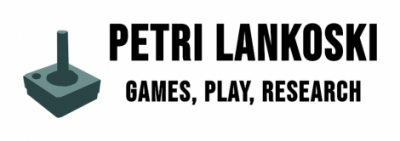According to Anderson et al. (2010) there is a link between violent games and aggressive behavior. However, that meta-analysis has been criticized. In addition, studies have found little evidence that violent games relates to violent behavior in real life, for example, as aggravated assault or homicide. (see my previous post). Again, this is not a systematic review, but more notes to myself on the topic.
According to Ferguson and Rueda (2009) modified Taylor competitive reaction time test of aggression (modified TCRTT) is used to violent game effects. The idea of TCRTT is to measure how much painful noise (or in unmodified version electronic shock) participants are willing to induce to another.
However, Ferguson and Rueda note that there is no standardized version of modified TCRTT. Elton (2016) reviewed the use of TCRTT in 130 publications and found that those publications used 156 different quantification approaches. Ferguson and Rueda (2009) argues that lack of standardized version has a serious consequences: “Researchers (or indeed clinicians) could choose outcomes that best suit their hypothesis and ignore outcomes that do not.”
Tedeschi and Quigley, TCRTT have more fundamental flaw in its design:
Tedeschi and Quigley 1996 note, the iterative nature of the game may encourage aggressive responding for other reasons, such as reciprocity (fairness) and deterrence (social control), rather than desire to harm. There is also the possibility that very competitive participants might use more severe shocks, not because they want to harm theirmopponent, but to negatively affect their reaction rates and so ‘‘win’’ the game. (cited in Ritter and Eslea, 2005.)
If we “define aggression as behavior that is intended to harm another individual who does not wish to be harmed“ (Baron and Richardson, 1994, cited in Rajiv and Hammond, 2014) intention to harm should be also evaluated. Laboratory research have a great challenge here because participants are most likely aware that research cannot setup study so that participants could harm someone with their actions in an experiment. (C.f. Ritter and Eslea, 2005.) Also, Milgram experiment at 1960s tells a story, at least, how experiment situation can setup so that participants follow instructions, give electric shocks, even when thinking they cause pain to someone; however, the participants apparently lacked intention to harm.
Breuer, et al. (2015) studied the relation of frustration and aggression measuring aggression with modified TCRTT. They conclude:
The current results corroborate previous research and provide further support for the contention that factors other than violent content play a role in the effects of digital games on aggression. (Breuer, et al. 2015)
Elton, et al. show evidence that game speed, for example, can influence aggression measures used in laboratory research:
The results show that game speed, a feature that tends to vary across games and genres, not only interacts with displayed violence, but also has a direct effect on several outcome variables that might otherwise be misleadingly attributed to displayed violence. The findings of this study demonstrate the importance of controlling potentially confounding factors in experimental research on digital games and points to the importance of further systematic research into what other variables of a game may affect player experience and behavior […] (Elson, et al. 2015)
For the future reading: Ritter and Eslea (2005) provides review of main approaches(including TCRTT) to measure aggression in laboratory settings as well as critique to those.
References
- Andreson, et al. 2010. Violent Video Game Effects on Aggression, Empathy, and Prosocial Behavior in Eastern and Western Countries: A Meta-Analytic Review. Psychological Bulletin, 136(2). DOI=0.1037/a0018251.
- Breuer, J., Scharkow, M. and Quandt, T. 2015, Sore losers? A reexamination of the frustration–aggression hypothesis for colocated video game play, Psychology of Popular Media Culture, 4(2), pp.126-137.
- Elson, M., Breuer, J., Van Looy, J., Kneer, J. and Quandt, T. 2015, Comparing apples and oranges? Evidence for pace of action as a confound in research on digital games and aggression, Psychology of Popular Media Culture, 4(2), pp.112-125.
- Elton, M., 2016. Flexible Measures / Competitive Reaction Time Task. Available at http://www.flexiblemeasures.com/crtt/index.php?menu=publications.
- Ferguson, C.J. and Rueda, S.M. 2009. Examining the validity of the modified Taylor competitive reaction time test of aggression. J Exp Criminol, 5(121). DOI= 10.1007/s11292-009-9069-5.
- Rajiv, J. and Hammond, T. 2014. Principles of social psychology. Available at https://opentextbc.ca/socialpsychology/.
- Ritter and Eslea, 2005. Hot Sauce, Toy Guns, and Graffiti: A Critical Account of Current Laboratory Aggression Paradigms. Aggressive Behavior 31, pp.407–419.


